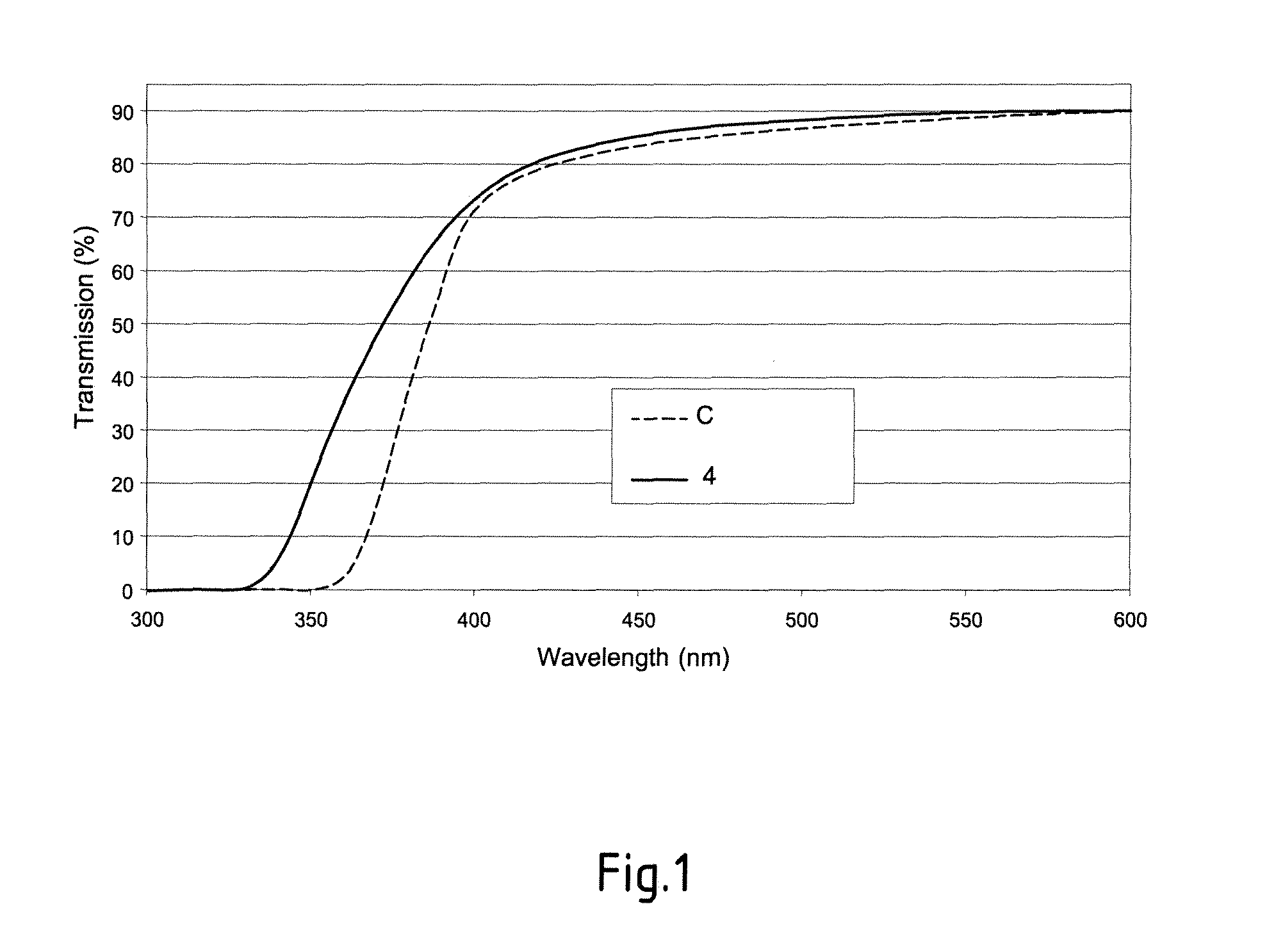Transparent, colorless low-titania beta-quartz glass-ceramic material
a glass-ceramic material, transparent technology, applied in glass blowing apparatus, glass furnace apparatus, glass shaping apparatus, etc., can solve the problems of undesirable color tint in the visible spectrum of current commercial products of essentially transparent, essentially colorless glass-ceramic, and achieve the effect of sno2 content, and not optimizing crystal siz
- Summary
- Abstract
- Description
- Claims
- Application Information
AI Technical Summary
Benefits of technology
Problems solved by technology
Method used
Image
Examples
examples
[0176]To produce 1 kg batches of precursor glass, the raw materials in the proportions (expressed in oxides) given in the first part of Table 1 below were carefully mixed.
[0177]The mixtures were placed in platinum crucibles for melting. The filled crucibles were placed in a pre-heated furnace at 1400° C. They underwent the following melting cycle (i) rising temperature up to 1650° C. at a heating rate of 2° C. / min; and (ii) holding this temperature of 1650° C. for 12 hours.
[0178]The crucibles were then removed from the furnace and the molten glass was poured onto a pre-heated steel plate. It was rolled to a thickness of 4 mm. Approximately 20 cm×30 cm glass plates were obtained. They were annealed at 650° C. for 1 h and then cooled gently.
[0179]The glass plates obtained were generally very transparent.
[0180]They were subjected to a ceramming (crystallization=nucleation+crystal growth) treatment such as specified below. Said glass plates were heated to 650° C. at a heating rate of 30...
PUM
| Property | Measurement | Unit |
|---|---|---|
| temperature | aaaaa | aaaaa |
| temperature | aaaaa | aaaaa |
| transparency | aaaaa | aaaaa |
Abstract
Description
Claims
Application Information
 Login to View More
Login to View More - R&D
- Intellectual Property
- Life Sciences
- Materials
- Tech Scout
- Unparalleled Data Quality
- Higher Quality Content
- 60% Fewer Hallucinations
Browse by: Latest US Patents, China's latest patents, Technical Efficacy Thesaurus, Application Domain, Technology Topic, Popular Technical Reports.
© 2025 PatSnap. All rights reserved.Legal|Privacy policy|Modern Slavery Act Transparency Statement|Sitemap|About US| Contact US: help@patsnap.com

